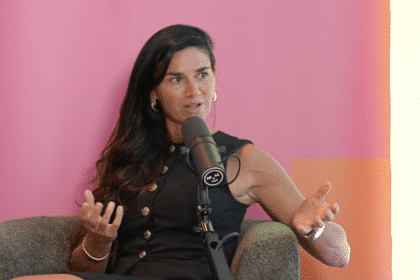In this guest post, Chris Couchman (pictured below), Readly Australia’s head of content, says, when it comes to content and news, no reader is the same, no platform is the same and it’s unwise to take a blanket approach…
While I was working in newspaper publishing, I recognised the advantages of joining a digital platform. Now having sat both sides of the fence, I can see that it’s a no brainer. The partnerships we have with our newspaper publishers contribute to the growth of their digital reach and provide an additional revenue stream – naturally.
But we can also help to deliver new global audiences, boost ABC accreditation figures where needed and provide robust analytics through Readly Insight, which holds over 34 billion reader-generated data points. On top of that, we welcome the addition of the great magazine supplements to our app. These fit brilliantly within our magazine portfolio and already we’re seeing high levels of engagement from readers familiar with the publication, as well as delivering a new audience, not already aware of the great content on offer.
That being said, our partnership with a newspaper publisher is mutually beneficial. Newspapers increase the attractiveness of platforms like Readly in the subscriber acquisition phase, enhancing the “all you can read” offering, and they increase reader engagement throughout the subscriber’s lifecycle. From January 2020 to January 2021, we saw a significant increase in our Daily Active Users as readers logged into the app more frequently. The ripple effect has been that more publisher brands are read, both newspapers and magazines, and reading sessions are longer and more frequent. The result is that total reading times are being driven up by the inclusion of newspapers without cannibalising magazine reading.
Currently in the UK, the profile of Readly subscribers (Q1 2021) is as follows:
- Only 2 per cent of total accounts are reading newspapers only. Subscribers are buying into a total reading package and not just a single news brand.
- Approximately 30 per cent are reading both newspapers and magazines. These subscribers are displaying strong characteristics in terms of titles read, reading times and subscription retention.
- Approximately 70% are reading magazines only. We see huge potential in developing newspaper reading among this core group.
For us to drive engagement within that 70 per cent, we need to learn from these publishers. We’re happy to admit that we are the new kids on the block here.
While no two publishers are the same, we can see that many have the same priorities right now. Understandably, many have a lot to say about the effects of the pandemic. It’s widely agreed that the past year has accelerated existing trends both internally (in the organisation) and externally (in terms of consumer behaviour).
One publisher told us, “Things actually haven’t been as catastrophic as many were expecting. Publishers with strong reader relationships – which usually means subscriptions – have done well during the pandemic. For everyone else, it’s the digital Wild West, where there is simply too much news available – a lot of it unreliable and most of it free.”
Another thing we’ve learnt is that most publishers report shifting from short-term trials (sometimes just for a month) into three to four month offers with firmer prices. At the same time, a number of publishers are testing full access to content for a limited time versus limited access to content over a longer time frame. There seem to be no set rules and the results vary by demographic group. Newsletters are widely seen as a powerful engagement device for paying subscribers, while podcasts and videos are being used both as value-adds to the main subscription or as stand- alone paid-for products.
A recurring theme is the importance of data. Each reader is an individual and increasingly wants to be treated like one – that means AI in every aspect of content creation, marketing and customer service to deliver a real 121 relationship. Data is allowing us to dive deeper and deeper into the reader’s whole lifestyle, but the volume of data is producing data overload for many publishers. It means that having the right infrastructure in place is a necessity when it comes to sorting out which are the metrics that matter and knowing how to utilise them to drive positive change. Many publishers recognise that there are no quick fixes or cheap options – it’s a long and expensive game.
If no two publishers are the same, then that also holds true for consumers, countries or individual brands – newspapers or magazines. Extending our content portfolio beyond magazines and into newsbrands is already showing major benefits all round. Yet we are all in a constant process of learning about what works and what does not. And that is exciting, positive and rewarding for us all.









